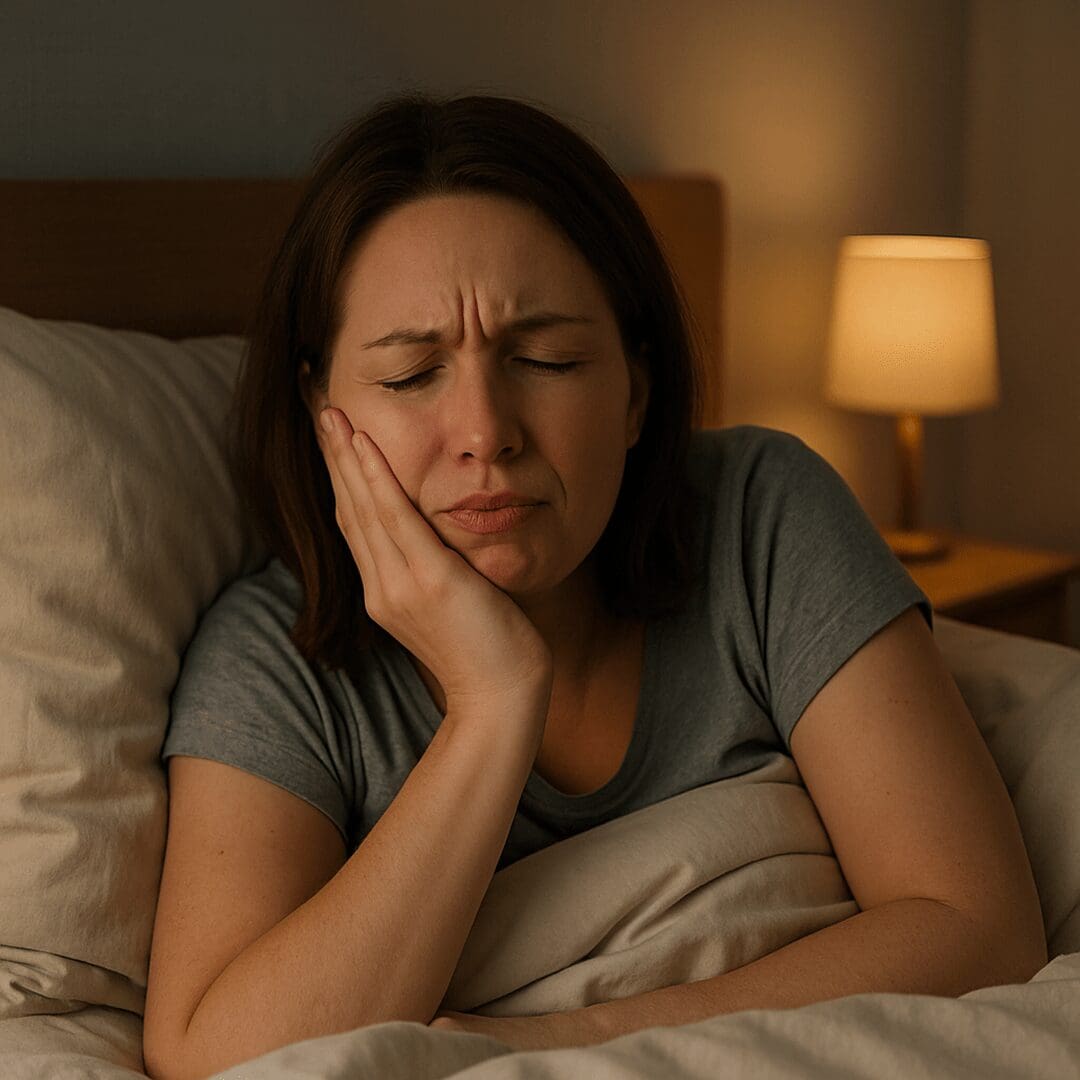The first night after tooth extraction is crucial for setting the foundation for a smooth recovery. Patients can expect mild to moderate pain, some bleeding, and swelling, which are normal parts of the healing process. Proper aftercare during this period helps prevent complications like dry socket and promotes faster healing.
This guide outlines what to expect and provides practical steps to manage discomfort, control bleeding, and support healing during the first 24 hours post-extraction.
Table of Contents
- What to Expect the First Night After Tooth Extraction
- Managing Pain and Discomfort
- Controlling Bleeding and Swelling
- Eating and Drinking Guidelines
- Sleep and Rest Recommendations
- Activities to Avoid
- Signs of Complications
Quick Answers: FAQs
1. What to Expect the First Night After Tooth Extraction
Understanding the typical experiences during the first night can help you prepare and respond appropriately:
- Pain and Discomfort: As the anaesthesia wears off, it’s normal to experience mild to moderate pain.
- Bleeding: Slight bleeding or oozing may occur for several hours post-extraction.
- Swelling: Facial swelling near the extraction site is common and may peak within 24-48 hours.
- Restricted Mouth Function: Jaw stiffness or difficulty opening the mouth fully can happen temporarily. These symptoms are typical and usually subside with proper care.
2. Managing Pain and Discomfort
Effective pain management is essential for comfort during the first night:
Medications: Take prescribed painkillers or over-the-counter options like ibuprofen or paracetamol as directed.
- Cold Compress: Apply an ice pack to the cheek near the extraction site for 15-minute intervals to reduce pain and swelling.
- Rest: Limit activities and rest to aid the healing process.
Always follow your dentist’s instructions regarding medication and care.
3. Controlling Bleeding and Swelling
Proper techniques can help manage bleeding and minimise swelling:
Gauze Pressure: Bite down gently on a gauze pad placed over the extraction site for 30-45 minutes. Replace as needed.
- Avoid Disturbing the Clot: Do not rinse vigorously, spit forcefully, or use straws, as these actions can dislodge the blood clot.
- Head Elevation: Keep your head elevated with pillows to reduce bleeding and swelling.
If bleeding persists beyond a few hours, contact your dentist.
4. Eating and Drinking Guidelines
Your diet should support healing while avoiding irritation to the extraction site:
First 24 Hours:
- Foods: Consume soft, cool foods like yoghurt, applesauce, or mashed potatoes.
- Hydration: Drink plenty of water, avoiding hot beverages.
- Avoid:
- Hard or Crunchy Foods: These can irritate the extraction site.
- Hot, Spicy, or Acidic Foods: They may cause discomfort or disrupt healing.
- Alcohol and Caffeine: These can interfere with the healing process.
- Hard or Crunchy Foods: These can irritate the extraction site.
Gradually reintroduce solid foods as comfort allows.
5. Sleep and Rest Recommendations
Quality rest aids recovery:
- Sleeping Position: Sleep with your head elevated using extra pillows to reduce swelling.
- Avoid Pressure: Do not sleep on the side of the extraction to prevent pressure on the area.
- Bedtime Routine: Take pain medication about 30 minutes before sleeping to manage discomfort.
Creating a comfortable sleeping environment can improve rest quality.
6. Activities to Avoid
Certain actions can hinder healing and should be avoided during the first night:
- Strenuous Exercise: Physical activity can increase bleeding and swelling.
- Smoking: Tobacco use impairs healing and increases the risk of complications.
- Alcohol Consumption: Alcohol can interfere with medications and delay healing.
- Touching the Extraction Site: Avoid probing the area with your tongue or fingers.
Adhering to these precautions supports a smoother recovery.
7. Signs of Complications
Be vigilant for symptoms that may indicate complications:
- Persistent or Severe Pain: Pain that doesn’t improve may suggest dry socket.
- Excessive Bleeding: Bleeding that doesn’t subside with pressure requires attention.
- Swelling or Fever: These may indicate infection.
- Foul Odour or Taste: Could be a sign of infection or dry socket.
If any of these occur, contact your dentist promptly.
Quick Answers: FAQs
Q: Can I brush my teeth the first night after extraction?
A: Avoid brushing near the extraction site for the first 24 hours. Maintain oral hygiene by gently brushing other areas.
Q: When can I resume normal eating habits?
A: Gradually reintroduce solid foods over several days, depending on comfort and healing progress.
Q: Is it normal to have a bad taste in my mouth?
A: A mild taste is common. However, a persistent foul taste may indicate infection and should be evaluated by a dentist.
Q: How long should I use ice packs?
A: Apply for 15-minute intervals during the first 24 hours to reduce swelling.
Conclusion
The first night after tooth extraction requires attentive care to manage discomfort and promote healing. By following the outlined guidelines managing pain, controlling bleeding, adhering to dietary recommendations, and avoiding certain activities you can support a smooth recovery process. Always consult with your dental professional if you have concerns or experience unusual symptoms.Visit us at Family Dental Care

